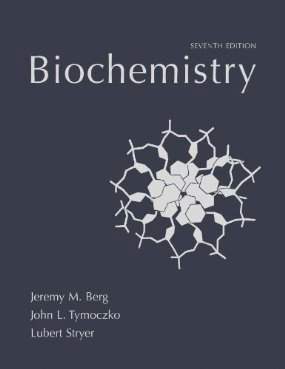
This is a quick preview of the lesson. For full access, please Log In or Sign up.
For more information, please see full course syllabus of Biochemistry
For more information, please see full course syllabus of Biochemistry
Biochemistry Example Problems with Acids, Bases & Buffers
Lecture Description
This lecture contains three in-depth example acid-base problems with an emphasis on buffer solutions. The first discusses glycine, which is often used in biochemical buffer solutions, and how to calculate how much glycine is protonated. The second example explains how phosphate buffers work and how to control the exact pH using concentration. Example 3 discusses lactic acid, pKa, and explains how to determine pH. The final example explains how to find Kₐ₂ or pKₐ₂ of an unknown compound that has two ionizable hydrogen atoms (it is a polyprotic acid) using equilibriums and titrations.
Bookmark & Share
Embed
Share this knowledge with your friends!
Copy & Paste this embed code into your website’s HTML
Please ensure that your website editor is in text mode when you paste the code.(In Wordpress, the mode button is on the top right corner.)
×
Since this lesson is not free, only the preview will appear on your website.
- - Allow users to view the embedded video in full-size.
Next Lecture
Previous Lecture










































 Answer Engine
Answer Engine




0 answers
Post by Michael De La Rosa on November 15, 2021
Why was Example 4 worded as strangely as it was? What is the purpose of wording the question this way? What is this kind of question preparing me for? Is this how chemists speak?
Couldn't the quest been worded as . . . "A 100 mL solution of an unknown compound is at a pH of 2.5. 85.0 mL of NaOH is then added to this solution. The unkown compound has two ionizable groups, the first (pKa1) is at a value of 2.5. What is the second's (pKa2)?"
In my re-wording, I have included all of the information from the original question. I also made sure to not include any more information. All I've done was separate the reaction chemistry from the known facts of the unknown compound and ordered the events chronologically.
1 answer
Fri Jan 4, 2019 4:36 AM
Post by Anthony Villarama on January 2, 2019
Professor I am so impressed with your teaching knowledge. I was blown away how good you are. The way you solved the problems 2,3, and 4 are so amazing. I am going to watch your physical chemistry soon. My only wish is I hope you will also teach Analytical Chemistry that includes the classical and instrumentation. I am going to keep track all of your videos. You deserved the highest pay than any other teachers in the world.
2 answers
Last reply by: Swati Sharma
Sat Jan 27, 2018 10:16 AM
Post by Swati Sharma on January 21, 2018
Dear Dr Raffi
I am little confused in understanding the questions. For example in class we did this question : Calculate the PH of 1L solution containing 0.1 M of Formic acid and 0.1 M sodium formate. So in class our professor told us not to convert them into ,moles and so we directly used 0.1 M concentration into the ICE table.
But if the question says for example Calculate the PH of 2L solution containing 10ml of 5M of acetic acid and 10ml of 1M of sodium acetate then we do convert the concentrations such as 5 moles/1lites * 10.0*10 - liters * 1/2litres and we get Molar concentrations. So in your last question the question said 100.0ml of 0.15 M unknown solution so instead of converting 0.15 M into moles I directly used 0.15M and divided by 2 and got 0.075 M and I plugged into ICE tables and I got the same answer. So if I am not wrong if the question phrases such as Calculate the PH of 1L solution containing X M of acid and X M of base is different from question such as Calculate the PH of 1l solution containing Xml of acid and Xml of base. Please could you explain me if I am right.
Respectfully
Swati
1 answer
Last reply by: Temitope Olasusi
Thu Nov 17, 2016 2:40 PM
Post by Temitope Olasusi on November 17, 2016
How do you solve for the antilog?
6 answers
Sat Dec 21, 2019 7:15 AM
Post by pierre shaouni on September 15, 2016
at 17:24 how did u get the answer from 2.18= ((o.15-h2po4/h2po4)) to be 0.047. i am confused on what was skipped
0 answers
Post by Professor Hovasapian on February 14, 2014
Hi Tejinder.
I hope you're well.
My apologies for the delayed response.
I'm presuming you meant that the only ACIDS you have available have pKas of 8.0 and 6.9 respectively?
In this case, it really depends on whether the Buffer is going to be absorbing Acid or Base during its function as a buffer.
If absorbing base, then you'll have more buffering capacity if you choose 8.0. If absorbing Acid, then 6.9 is better.
Either one is a fine choice though, if there is not going to be too much movement.
I hope that helps. Let me know.
Best wishes.
Raffi
1 answer
Fri Feb 14, 2014 1:57 AM
Post by Tejinder kaur on February 11, 2014
Hi Professor, I have homework question and I am little confuse on what one to pick. You want a make a buffer with a pH 7.5, but only buffers you have available have pka of 8.0 and 6.9. Which one, if any, would be better choice and why?
I have picked 6.9 because the buffering region include from 5.9 to 7.9 is close to the pH 7.5. Can you please help me? Thanks
4 answers
Last reply by: Aaron Wasielewski
Mon Feb 3, 2014 12:35 PM
Post by Aaron Wasielewski on January 28, 2014
Hi professor, I am just hitting a bit of a snag here with example 2, and perhaps it should be obvious to me, since it is simple algebra, but at the moment it is not. How are you getting the molarity of 0.047 for the dihydrogen phosphate concentration around 16:21? Maybe after I take a break and try it again, it will jump out, like "AH-HA!", but right now it just isn't. Thank you so much for your help!
3 answers
Tue Jan 28, 2014 3:03 AM
Post by Madeleine Hackstetter on December 15, 2013
Hi Professor, could you please explain the exact algebra you did in Example 2: Total Phosphate Concentration to get the 0.047 M. It's around 16:27 minutes. I tried doing the question on my own and keep getting an incorrect M value but I'm not sure where my algebra is going wrong.
That would be a great help,
Thank you